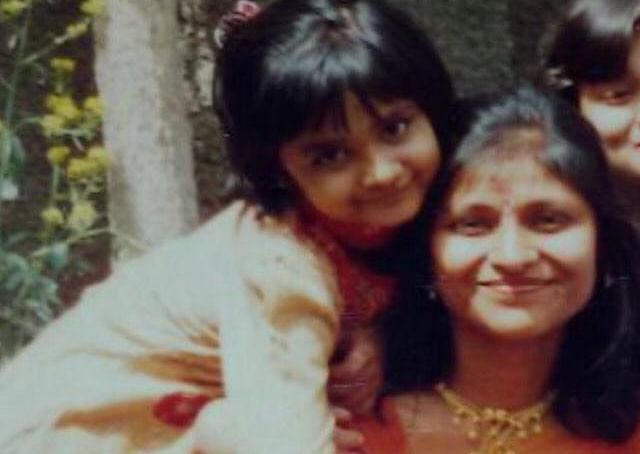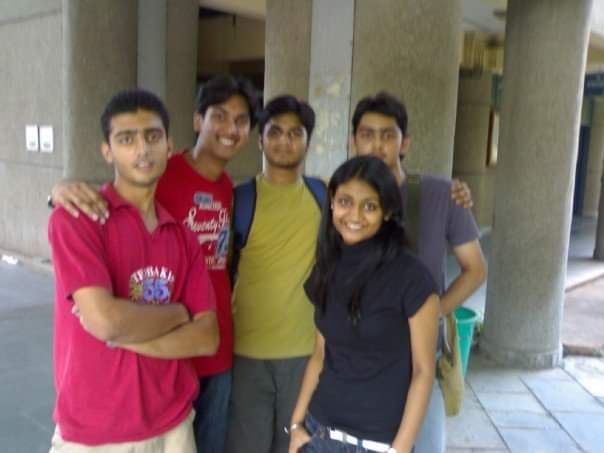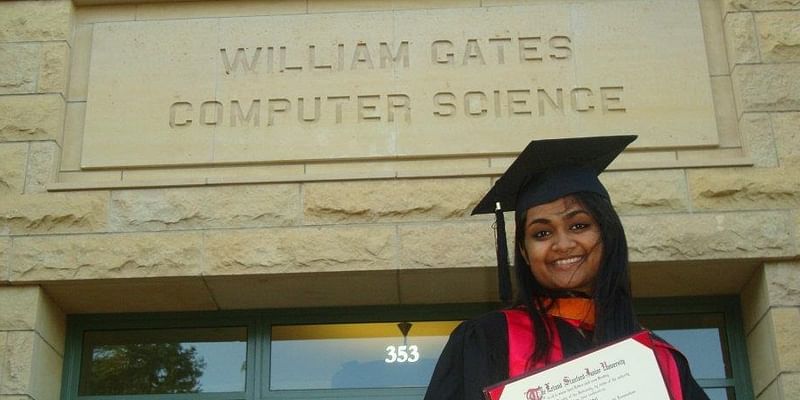It was love at first sight for Riddhi Mittal when she first saw a computer at the age of five. At 10, she got her first taste for programming and coding, and since then, it has been hard for her to take her finger off the keyboard.
Over the years, Riddhi has donned many hats: she has worked as a coder with Facebook and Microsoft, as an investment banker. She then built a disaster-management platform to help with the 2014 Kashmir floods, and then co-founded fintech startup Finomena.
The 29-year-old’s latest project is CovidIndia Taskforce, a platform that brings tech, data, funding, and distribution, in one place. She aims to deploy tech to unearth infection-related trends, and ensure all information to prevent further spread of the coronavirus is readily available on a single platform.
“For me, I always look at the big hairy problems that haven’t used technology. I like the challenge of using technology to change something,” says Riddhi.
Born in Agra to a business family, Riddhi’s father believed education and technology were not important skills, or needed in the ‘real world’, but her academically inclined mother, Urvashi Mittal, kept encouraging her to pursue her passions – computers and coding.
“(The dichotomy) gave me a window into two different parts of the world. My father focused on making us street-smart, while my mother pushed us to come first in every class and every subject,” says Riddhi.
Her formative years, and the lessons she learned from both her parents are what helped Riddhi become the woman she is today. Even her teachers picked up on her zest for academia, and let her skip two grades since she was a faster learner than her peers.

Riddhi Mittal
Coding for the love of it
The earliest memory Riddhi has of tinkering with computers was when, at the age of five, she joined classes to learn Windows applications.
My mother would find teachers and convince them to take me under their wing by telling them that they would love to teach a child like me, says Riddhi. “I loved being the teacher’s pet. If a teacher taught me something, I would learn it quickly because I never wanted to let my teacher down.”
Shortly after she joined the classes, her school started teaching computer basics. But Riddhi had advanced to newer languages by then, and was far ahead of her peers. She decided to help her classmates, much to the teacher’s chagrin, at times.
Time went on, and at the age of 10, Riddhi’s mother, seeing her daughter’s fervour for programming, signed her up for every extra-curricular class available, as well as enrolled her in an institute that taught coding.
“I remember in falling in love. Everything about it was black and white, and it was just like mathematics. It was like speaking a new language altogether. The best part of that institute was that it didn’t discriminate based on age or gender. I had two of the best teachers there. Since they never made me feel that being a girl was a disadvantage, I never felt it. It was a male teacher and a woman teacher who helped me hone my coding and programming skills,” recollects Riddhi.
She mastered Java, Corel Draw, and Flash in a matter of months, and started dry-running her programmes and codes soon after.

Riddhi with her Mother
Looking for a bigger challenge
By the age of 11, Riddhi started coding in C and C++ languages, and continued to teach herself by referring to textbooks used by higher forms in her school.
“I would make the conscious call of distancing myself from people who said you can’t do something because I simply didn’t want my brain picking it up,” she says.
She kept levelling up, and when Agra became too small to pursue a structured education in programming, Riddhi decided to move to Delhi to finish her 11th and 12th grade.
But DPS RK Puram was a different ball game, all together:
“I was in an all-girls school (in Agra), and my life was a combination of programming and studies. There was no concept, at least in school, of a boy being prioritised over me. While I had seen that happen in my family, with the birth of my third sister which was a sombre occasion, school and computers didn’t discriminate,” says Riddhi
At DPS, a co-ed school, Riddhi was ignored by the boys in her class, even though the teachers took to her quite well because of how intelligent she was. The incident, at a tender age of 14, impacted the tech-enthusiast deeply, but she resolved to stay the course and ace her programming classes to stand out from the crowd.
Girls code all the time
The first time Riddhi, a lifelong topper, placed fourth in her class, she cried:
“I remember one of the guys walked up to me and said – why are you crying, you’ve come first among the girls. I had this nagging feeling that people would think guys were better at programming despite me getting better marks,” she recalls.
But the incident only pushed her to code more, and focus on majoring in computer science. She thought of joining one of the IITs, like the rest of the students in her class, but when she realised it was the institute that decided who got to pursue a computer science elective, Riddhi was put off and discouraged.
“A little naive in retrospect, but the idea of someone telling me I can or can’t do something always bothered me,” she says.
It was then that she stumbled upon a course Stanford was offering for computer science enthusiasts, and decided to pursue her higher education there.
Riddhi credits the Santa Clara County, California-based institute for making her a confident coder.
“I remember signing up for robotics at DKS RK Puram – I hadn’t seen all this in Agra. I entered a classroom of five boys, who laughed at me, along with the teacher, when I entered the class. I remember crying and running away. I didn’t try robotics for the next five years, and it has been one of my regrets,” she says.

Riddhi Mittal, during her DPS RK Puram Days
Stanford calling
At Stanford, Riddhi’s knowledge was put through the paces, but she quickly climbed to the top of her class.
A computer science major in 2007, Riddhi focussed on specialised subjects like practical applications of distributed systems, operating systems, natural language processing, parallel programming, compilers, machine learning, networking, databases, AI, computer security, iPhone programming, web Programming and security, object-oriented systems design, robotics, computer graphics, algorithms, BioComputation, and
data visualisation.
“At Stanford you need to build things week-on-week. In the second year of our OS class, we had built an MVP of an operating system. Whether it was distributed systems or networking, we had started writing protocols and find security loopholes,” she says.
By the time she turned 17, the maverick coder had built a retracer – a complex system with 3D meshes, and then, during her internship, built algorithms for a defence sub-contracting firm, from scratch.
Interning and building
In 2009, Riddhi started working at Stottler Henke – a firm that designs artificial intelligence software applications and development tools for planning and scheduling, and education, decision support etc. In her project she applied probabilistic road maps to solve route-planning for multiple satellite beam projections on domes.
They also added post-processing compression to make planners find the most efficient routes. Riddhi had designed an API for compatibility. She then developed a prototype for automatic parameter selection, improving software performance by 50 percent. She has written technical descriptions of projects that were incorporated into the final client report and proposal for the next phase.
After that, she interned at Microsoft where she designed and implemented a lock-free, multi-threaded, variable-length, incremental allocator that worked on efficient memory usage and addressed fragmentation for an insert-delete work load.
“The best part of interning at places in the US is that if you do good work, you get to work with the top teams and can build systems from scratch,” says Riddhi.
Till 2010, along with her internships and projects, she continued working as a teaching assistant at Stanford, and two years later, she completed her Masters in Computer Science.

Riddhi during her Stanford days
Facebook and Microsoft
Her stint at Facebook began in 2011 when the social media-giant was at a cusp of an explosive growth. Riddhi worked with GraphSearch, the company’s cross-team project between the search product and search infrastructure.
“I wanted to explore different sides. I knew the coding and technical aspects, and was strong there. I now wanted to explore the marketing and investment side. Between 2012 and 2013, I got into marketing strategy, and understood how the investment side worked,” she says.
While she enjoyed the marketing and investment projects, and learned a lot there, she knew coding was her true calling, and so, in 2013, she joined Microsoft’s HoloLens project.
“I was the youngest program manager on the team led by Alex Kipman. I was back doing what I knew best and was working with the best minds of the world. I learned so much more,” says Riddhi.
Using technology to combat natural disasters
While working with the giants of the tech industry was an enthralling experience, Riddhi knew she wanted to build something of her own, that could help solve large-scale problems.
An unfortunate calamity in Jammu and Kashmir, in 2014, presented the perfect opportunity for Riddhi to explore using tech in disaster management operations.
The flood in the valley, which had wreaked havoc and caused mass destruction of infrastructure, had also separated family members from each other. Riddhi decided to build a web platform to help families reunite. All that users had to do to ask for help on the platform was post their family members’ missing persons report, or peruse through ‘founder persons’ report posted by rescuers.
“I built a comprehensive matching, messaging, and alert systems in the backend. I built the platform in 10 days, and reached out to the army hotlines, NDRF, home affairs, and police stations to get an understanding of the on-ground situations. I even adapted these to the Assam and Meghalaya floods,” the young techie says.
She also began working on coordinating donation activities for the affected areas, after realising that while relief was short-termed, rehabilitation was longer-termed and more necessary.
Riddhi worked on the platform for a while, but had to put it on the back burner after she ran out of funds.
Getting into the world of finances
Moving on from her disaster management project, Riddhi decided to explore the buzzing world of fintech which had started garnering headlines day after day. While researching the sector, she found that India’s credit market was starved of digital opportunities, and that the country needed to digitise its operations more than any other market.
After learning how stocks, fixed income, options and futures worked, Riddhi started designing an algorithm using artificial intelligence technology.
“I understood the differences between technical trading, quantitative trading, and fundamentals-driven trading,” says Riddhi. All this gradually led to her co-founding a fintech startup with Abhishek Garg, called Finomena.
Using big data, and finance, the platform basically helped banks determine the creditworthiness of an individual, and ensured that the disbursement of loans happened in a viable and efficient manner.
The startup shut shop after two years, but Riddhi says it gave her a better understanding of the startup world.
“They say hindsight vision is 20:20. And that is true – you learn things from situations and interactions. I understand co-founder conflict, internal conflicts, and how they can be dealt with in a better way. It is something I do when I talk to young founders today – I tell them, from experience, that it is important to have good people skills along with great coding skills,” says Riddhi.
What founders need the most right now is a sounding board, she says, a problem area the techie intends to explore under her new project, ‘Coming Alive’.
“The right answers will present themselves when we're solving for the right questions, and with my personal learnings and failures, I now know what questions to ask,” explains Riddhi.
Her top advice for technies today is to learn the art of selling their skills, as well as building strong people skills.
“I was a shy person who lacked confidence. I would think my code and my work would talk for me. While that does happen, it is also important that you communicate with people in the right way and get their attention towards what you are doing.”
Her dream for CovidIndia Taskforce is to become a platform that exemplifies how technology can be used to come up with creative solutions to big problems facing the world today.
“Healthcare today is a big problem and a challenge, and I wonder if there is a way in which we all can work and come together and find a solution.” Tech, she says, is our best chance to answer that question.
(Edited by Aparajita Saxena)
Want to make your startup journey smooth? YS Education brings a comprehensive Funding and Startup Course. Learn from India's top investors and entrepreneurs. Click here to know more.
Link : https://yourstory.com/2020/06/techie-tuesday-riddhi-mittal-coding-fintech-finomena-coronavirus
Author :- Sindhu Kashyaap ( )
June 09, 2020 at 05:40AM
YourStory



